Ethiopian stand in Leuven (Belgium) at the Hobo Reizen tourism fair on 8th January 2017.

embassy news

Ethiopian stand in Leuven (Belgium) at the Hobo Reizen tourism fair on 8th January 2017.
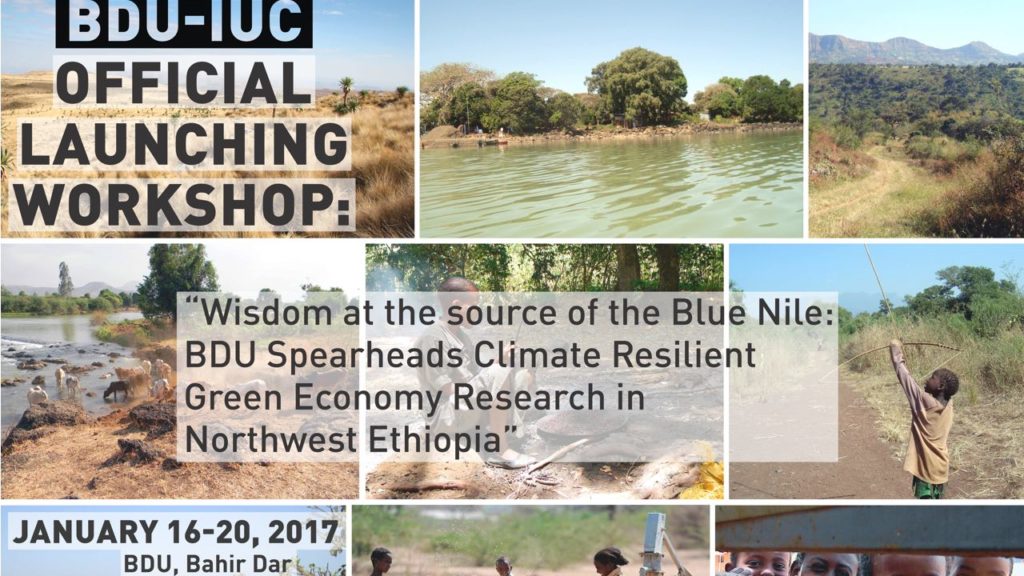
An Institutional University Cooperation (IUC) programme funded by the Flemish Inter-university Council -University Cooperation for Development (VLIR-UOS) has been approved between Bahir Dar University (BDU) in Ethiopia and the five Flemish Universities coordinated by Ghent University.
To achieve its overall academic objective, the IUC will be engaged in joint implementation of research projects on Land Resilience, Hydro(geo)logy, Post-harvest and food processing, Aquatic ecology and waterborne diseases, and Socio-economic development. A Transversal Institutional Strengthening Project (TISP) is included.
The overall development objective is to contribute to the Climate Resilient Green Economy (CRGE) strategy in Northwest Ethiopia through research geared towards the solution of bottlenecks related to environment, water, food security, health and economical and social development. The study areas of the IUC programme are the Tana and Beles basins in Ethiopia.
The official launching workshop of the IUC will be held from 16-20 January 2017, with the participation of Prof. Dr. Freddy Mortier (vice-rector of Ghent University), Prof. Dr. Guido Van Huylenbroeck (Academic Director for International relations), and Prof. Dr. Jan Nyssen (coordinator of BDU-IUC). They will be hosted by Dr. Baylie Damte (president of Bahir Dar University), Dr. Enyew Adgo and Dr. Firew Tegegne (coorndinator and manager of the BDU-IUC programme at BDU).
Learn more: http://geoweb.ugent.be/article/58748b7ec5d12c04ba866de8


While issuing a press conference on current affairs on Monday (January 09), Prime Minister Hailemariam Dessalegn noted, “Ongoing deep reform of the government will be effective through public participation.” Prime Minister Hailemariam said the reform program has created fertile ground to committed leaderships at various posts.
The Premier said an investigation bureau was established under the auspices of the Ethiopian Federal Police to fight against corruption and to hold accountable those involved in corruption and rent seeking. The bureau was also tasked to make public the wealth of government officials. He also indicated that an institution called “Democratic Center” was established in order to allow the public to give tips on corrupt leaderships.
According to the Premier, a tough investigation will be held on leaderships who were singled out as corrupt by the public, adding the government will take the necessary measure if it is supported with evidence.
The Premier further said that on the basis of the inputs gained from the reform program conducted so far, arrests were made on suspicion of corruption and rent seeking. Prime Minister Hailemariam also made remarks on other regional and continental issues.
Source: MFA Ethiopia
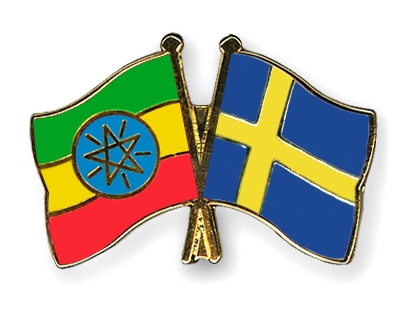
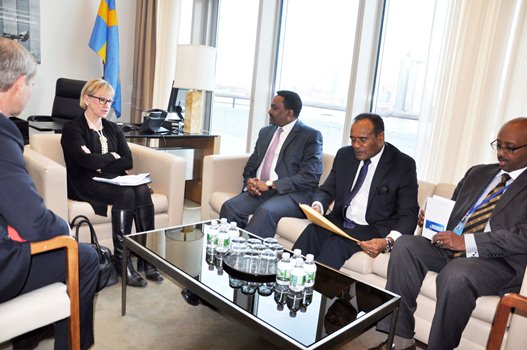
Minister of Foreign Affairs, Dr. Workneh Gebeyehu conferred with Ms. Margot Wallstrom, Minister for Foreign Affairs of Sweden in New York, On 9 January 2017 ahead of the High-Level UNSC Debate on Conflict Prevention and Sustaining Peace.
Given that both countries have already assumed their roles as non-permanent members of the United Nations Security Council (UNSC), the ministers discussed on ways of exploring cooperation on regional and international issues of common concern.
Foreign Minister Dr. Workneh Gebeyehu noted that the High-Level UNSC Debate on Conflict Prevention and Sustaining Peace which is due to unfold on Tuesday 10 January would be instrumental in the prospect of dealing with conflicts across the world, and particularly in the Horn of Africa Region.
Dr. Workneh further pledged that his country is keen to do all it can to make sure that the upcoming forum remains to be as productive as possible. Noting that the Swedish Prime Minister, Stefan Lofven had visited Ethiopia three times in 2015/16, Dr. Workneh further said the Premier’s visit has reinvigorated the bilateral relations between the two countries.
As Sweden takes over the January presidency of the UNSC, Minister for Foreign Affairs of Sweden, Ms. Margot Wallstrom on her part said her country is keen to work in close concert with Ethiopia and other members of the UNSC on a range of global issues. She also hoped that members of the UNSC would work in a cooperative spirit in the next couple of years.
Source: MFA Ethiopia
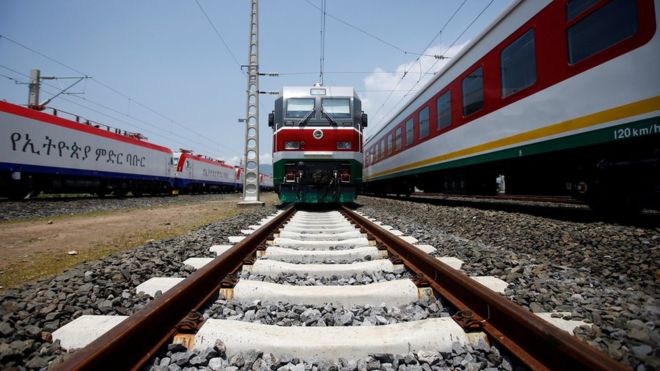
This article was originally published in the 4th issue (October 2016) of The Ethiopian Messenger, the quarterly magazine of the Embassy of Ethiopia in Brussels.
After three years of uninterrupted construction works, the Addis Ababa- Djibouti railway officially started operations. It is one of the eight new railway projects planned to be constructed in the country. As a very cost- effective means of transport over long distances, the Ethiopian railway infrastructure development projects are expected to significantly stimulate the national economy and accelerate regional integration.
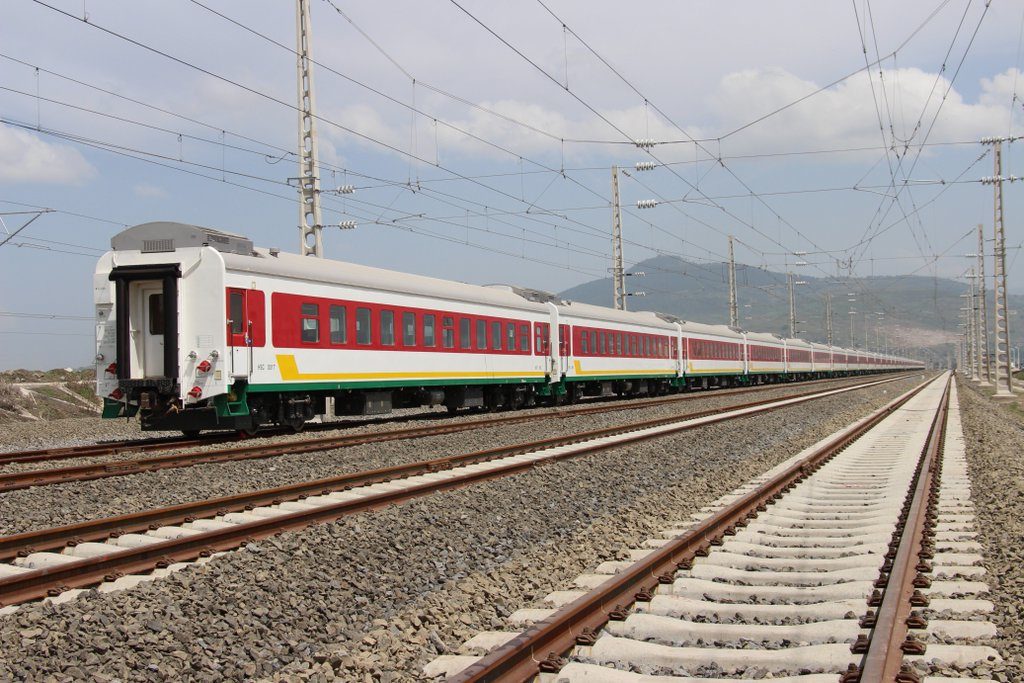
« By all standards, the Ethio-Djibouti project will change the way things work for any investor, particularly one who wants to get involved in manufacturing. The transportation cost will be low and it will be very reliable” Transport Minister Workineh Gebeyehu said at the 8th Ethio-Djibouti Railway Project Joint Commission meeting. « It is difficult to think of rapid economic development, industrialization and international competitiveness without efficient, high quality and modern transport infrastructure ».
Thanks to the implementation of three national development plans (The Agricultural Development Led Industrialization then the Growth and Transformation Plans I & II), Ethiopia is increasingly being recognized as an attractive country for local and foreign investors. Between 2008 and 2015, the country has witnessed a more than tenfold increase of foreign direct investments, which grew from USD 100 million to USD 1.5 billion. Sectors such as light industry and agro-processing, that were practically inexistent two decades ago, are now in the focus thanks to cheap and trainable labor force, affordable electricity and huge availability of raw agriculture goods. This attractiveness is set to further increase in the next years. According to consultancy firm Ernst & Young, the country will rank among Africa’s top four manufacturing hubs by 2025.
To achieve the status of regional manufacture and agricultural hub, Ethiopia needs to take advantage of its unique location, close to the Middle East, Europe and Asia. Though the world-class national airline Ethiopian Airlines already provides great transportation of fast consumption goods like horticulture and floriculture, the country still has to develop its transport capacity for non-perishable goods. This need is particularly acute because the country is landlocked. Road infrastructure has been developing fast in Ethiopia during the past years, but it cannot cover by itself the even faster-growing needs of the economy on the very large territory of Ethiopia (1,1 million km2). “We are a niche market in a good geographical position,” said CEO of the Ethiopian Railways Corporation (ERC) Dr Getachew Betru in an interview with The Worldfolio. “This is why the railway mode of transport is called a game changer.”
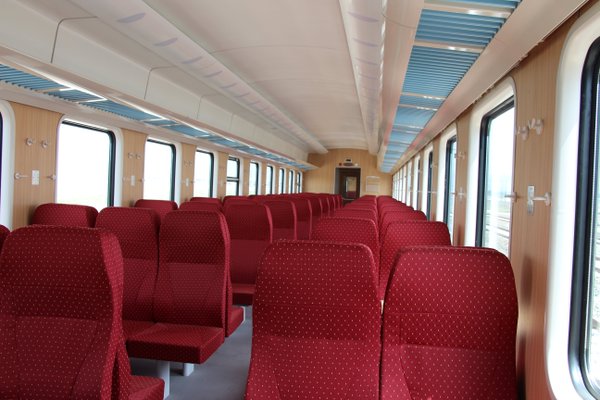
In 2007, Ethiopia’s Council of Ministers established the Ethiopian Railway Corporation (ERC), with a mandate to develop an integrated and high-capacity railway providing competitive and affordable passenger and freight transport services. The aim for the National Railway Network of Ethiopia is to build eight new railway lines for freight and passengers covering a total distance of 5,000 kilometers working across the country by 2020, in addition to an innovative 32-km light railway in the capital. Five of these eight projects are already in early or advanced stages of construction, while the Addis Ababa light railway already started operations in 2015.
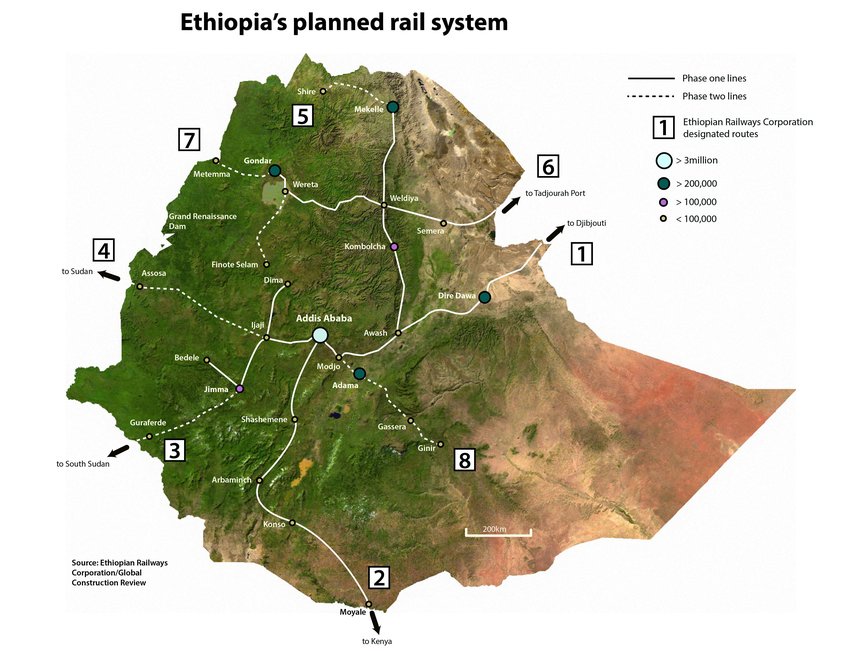
The light railway of Ethiopia is the first urban metro light rail scheme to be built in sub-Sahara, South Africa excluded. Since September 2015, up to 60,000 passengers can travel each hour on the two lines, across 39 stations and 32 kilometers. Thanks to subsidies from the government, the tickets are very cheap, allowing all the city inhabitants to use the innovative tramway. This new transportation system plays an effective part in solving the problems affecting Addis Ababa transport: an aged fleet, the chaotic and dangerous movement of mini-bus taxis and environmentally unacceptable levels of CO2 emissions. Eighty-five percent of the USD 475 million cost of the Addis Ababa Rail Transit project were covered by the Chinese Exim Bank, an agreement which came with significant technology transfer to train Ethiopian engineers and maintenance personal.
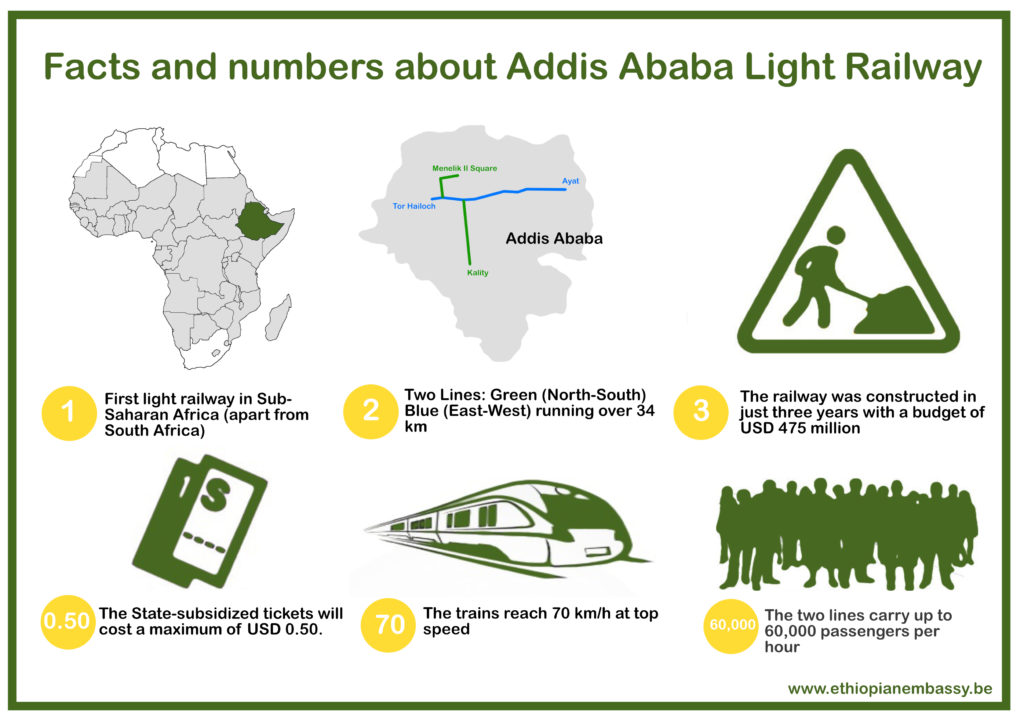
Built by the French in the 1890s, the initial Addis Ababa-Djibouti railway line deteriorated over the decades due to lack of maintenance, cutting Ethiopia’s direct railway access to the port of Djibouti. The construction works of the new line, which runs parallel to the old one-meter gauge railway, started anew in 2012, with a total construction budget of USD 4.5 billion, financed by the Ethiopian government and in loans from the Exim Bank of China. The 320 kilometers stretch from Addis Ababa to Mieso was built by the China Railway Group, while the 339 kilometers section from Mieso to the Djibouti border was built by the China Civil Engineering Construction Corporation. Italferr, the engineering subsidiary of Italian State Railways, provides consultancy services for maintenance and operations. The first freight on the line was carried on 20 November 2015 along the partially completed line to Merebe Mermersa and the line was inaugurated on 5 October 2016.
According to Transportation minister Workineh Gebeyehu, the Addis Ababa-Djibouti railway line will allow Ethiopia to compete efficiently on the international market. In fact, it will provide a fast, efficient and cheap freight and passenger transportation from the capital city to the port of Djibouti, where most of Ethiopia’s export and import items transit. With this new line, the travel distance is cut from several days to less than 10 hours, with passenger trains transiting as fast as 160 km/h and freight trains at 120 km/h. The line is East Africa’s most important standard gauge railway and will carry 750,000 passengers and 8.5 million tons of freight annually. It will create more than five thousand job opportunities.
On the other hand, the completion of the Addis Ababa- Djibouti railway will certainly expedite the economic integration efforts of the Eastern Africa region. It is to be recalled that Ethiopia is linked by standard road with Djibouti, Kenya, Sudan, South Sudan and Somalia. Electricity is also exported to Djibouti and Sudan.
The construction of the 268 kilometers Mekele-Weldiya line began in February 2015. It is funded by a loan from Exim Bank ($1,5 billion) and several other lenders ($1.7 billion). CCCC (China) and Yapı Merkezi (Turkey) are managing the project.
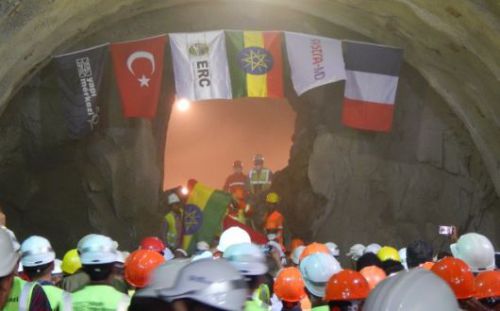
Connected to the Weldiya-Mekele line, the Awash-Weldiya line will ultimately connect Mekele to the Addis Ababa- Djibouti line. The 375 km project line is constructed by a consortium led by Yapi Merkezi (Turkey). The financing package comprises a USD 450 million seven-year loan from a consortium of lenders from Europe, Africa, the Middle East, and North America, and a USD 415 million 13-year loan backed by Sweden’s EKN and EKF and Swiss Export Risk Insurance. The terrain is particularly challenging for railway construction as Awash, at the southern end of the line, is 986 meters above sea level, and the line then climbs to Kombolcha at 1842 meters and finally reaches Hara Gebeya, close to Weldiya, at 2122 meters above sea level. This railway section achieved a major milestone in August 2016 with the holing through of a 1530 meters tunnel after one year of work. Three of the six tunnels on the line are now holed through.
This 280 kilometers project will give access to the port of Tadjoura in Djibouti, connecting the Ethiopian hinterland to another port facility in addition to the Djibouti port. It could be particularly useful to exploit the potash deposit in this region of Ethiopia.
The 439 kilometers line will connect Addis Ababa with Jimma, Bedele and in the future with South Sudan. Andrade Gutierrez Participacoes (Brazil) is in charge of the construction which started after prime minister Mr Hailemariam Desalegn laid the foundation stone for the project in May 2015. “The railway line which will ultimately connect to their neighbor Sudan, will play a major role in enhancing social, political and economic activities of the areas it crosses as well as the nation” according to Ethiopian Railways Corporation CEO Getachew Betru.
Beyond the construction of the different railway lines throughout the country, Ethiopia is investing in long-term capacity-building to continue planning, maintaining and building its railway network. In April 2015, Ethiopia put forward the plan to establish the Railway Academy of Ethiopia for skilled railroad professionals, where railway professionals would be trained as managers, engineers, technicians, and researchers. The goal is to develop the competencies at national level to be able to manage the whole rail network with Ethiopian engineers and staff by 2020. “Hopefully, by the end of 2020 all the railways will be made in Ethiopia by Ethiopians,” Betru said. “My generation is trying, but it is the next generation, the youth, that will transform Africa, and we will see the real impact on education, health and economy in the 2020s.”
In 2015, the country also drafted its first National Logistics Strategy, which is expected to improve Ethiopia’s maritime, air and road connectivity, which in turn will greatly enhance multi and unimodal logistics operating systems, Ethio- Djibouti Corridor Management, customs, maritime and transit administration structures.
Railway development in Ethiopia is first and foremost focused on economic development, but it will also have a positive impact on the building of a climate-resilient economy and regional integration. As a very cost-effective means of transport over long distances, the Ethiopian railway infrastructure development projects are expected to significantly reduce transport costs, increase the safety and reliability of transport services, facilitate the import-export trade of the country, increase the inflow foreign direct investment, strengthen socio-cultural cohesion, technical knowledge in the country and stimulate trade and peace in the whole region.
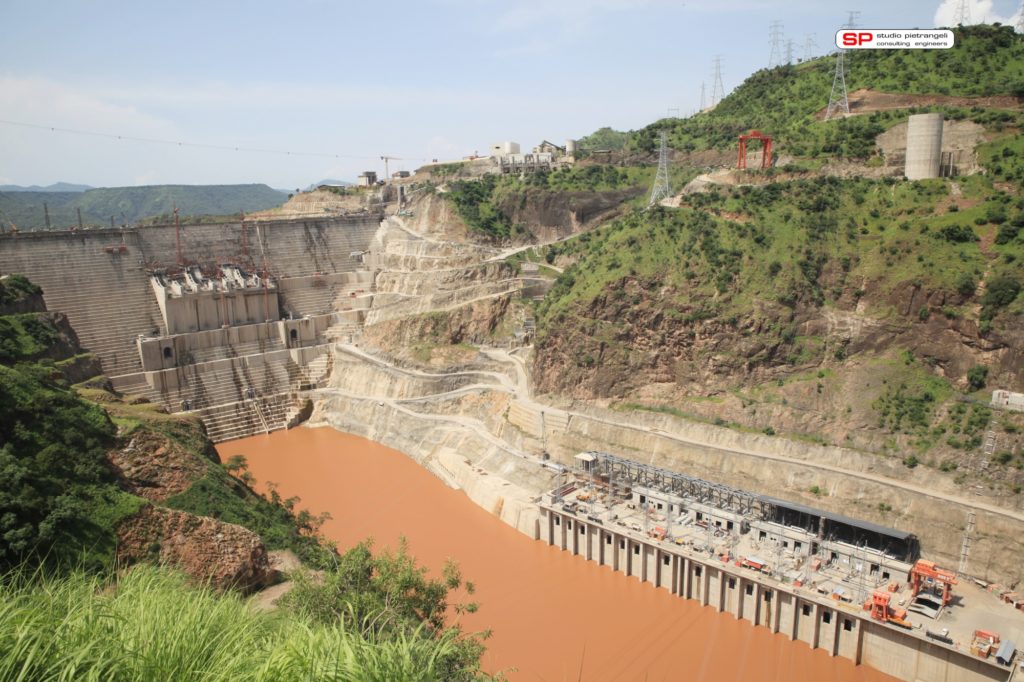
The Economist on December 21, 2016 stated that the Gibe III dam has the capacity to double the country’s electricity output at the flick of a switch. Prime Minister, Hailemariam Dessalegn had on Saturday 17, 2016 inaugurated the 243-metre (800ft) Gibe-III dam built on the Omo River. Gibe III is 1.5 billion Euros hydropower project located in the Southern Nations, Nationalities and Peoples’ region.
The Economist stated, dubbed as the water tower of Africa, Ethiopia has long sought to harness the power of its rivers that tumble down to deep gorges from its highlands. Gibe III is the latest in a series being built along the Omo River by the country, which is also constructing the Grand Ethiopian Renaissance Dam (GERD) on the Blue Nile; the 3rd largest Dam ever built in Africa. Together these projects are intended to turn Ethiopia, which has enormous hydropower potential, into a renewable-energy power house and exporter.
The project had taken about ten years due to various difficulties including financing. However, unparalleled effort of the government and the people of Ethiopia have enabled to finalize the project. Gibe III is expected to raise power generation capacity of the country and enhance regional integration through power infrastructures. Apart from becoming source of renewable power, the project will help the country earn more foreign currency. Gibe III will also play positive role to further strengthen development endeavors of the country.

Ethiopia is currently focusing on developing its hydroelectric potential and Gibe III scheme is part of that effort. The project will be instrumental in coping up with the nation’s increasing power demand, which increases 25 per cent annually. Accordingly, it enables to generate huge electricity to meet this insatiable demand; parallel to increasing export of electricity. Electricity production capacity is growing with time. For instance, Gibe I, with an installed capacity of 184 MW, was finalized in 2004; Gibe II with proven capacity of 420 MW was inaugurated in 2010 and lately Gibe III with 1870 MW. In addition, the GERD being built on the Blue Nile River will become the 11th largest dam in the world with an installed capacity of 6,000 MW.
According to the Economist however, “large dams tend to be controversial, wherever they are built.’’ The magazine argues that Gibe III will have significant consequences on hundreds of thousands of people that live downstream, whose livelihoods are dependent on the annual flood. For instance, it said, there was no flood in 2015 and the discharge in 2016 was too low to sustain crops. Added to this is the claim that the government did not consult the affected communities. “They have just been totally ignored.’’
Besides, “environmentalists and non-governmental organizations like Rivers International” have been viciously attacking all of Ethiopia’s hydro projects. It seems they are hell bent on hindering the development endeavour of Ethiopia.
Nevertheless, Ethiopia has been gallantly shrugging off all scathing remarks of nit-picker international organizations. The nation has turned deaf ears to their blather opting to continue its development endeavour and alleviating poverty. Ethiopia has strengthened its stance on the Gibe III dam and managed to finalize it (despite chiding and scathing remark of anti-development and self-professed organizations).
As witness of defying challenges, former Prime Minister, Meles Zenawi had once stated that Ethiopia is committed to finalize Gibe-III dam at any cost. And he discredited the concern and critics of international organizations about the disadvantage of Gibe-III to downstream countries, fauna and flora of the river valley as baseless. Meles replied that Ethiopia has carried out ample study to undertake environment-friendly projects as it does not want to incur damage environmental damage. In view of tenable evidence on the ground, the nation does not want to become receiver of wheat all the time; it has far better option to exploit renewable water resources, accelerate its development and extricate citizens out of the mire of grinding poverty.
To scientifically disprove the allegations of “environmentalists”, Environmental and Social Impact Assessment (ESIA) has been prepared in compliance with Ethiopian ESIA procedures and in accordance with the international standards and guidelines of the African Development Bank, European Investment Bank and the World Bank.
The Study aimed at strategically prioritizing national interest: gaining public acceptance, sustaining rivers and livelihoods, enhancing the function of existing dams and sustaining their longevity, sustaining and recognizing entitlements, ensuring compliance and mutually sharing benefits of rivers for peace, development and security, among others.
The ESIA was impeccably conducted and compiled by capable companies of Italy and consulting engineers of Ethiopia. They have carefully discharged their responsibility when compiling the document of Gibe-III project. Ethiopian Electric and Power Corporation (EEPCO’s) Environmental Monitoring Unit (EMU) has also prepared the ESIA project and the resettlement action plan (RAP) to help facilitate construction of the project.
The impacts assessment survey of Gibe III has included physical, biological and socio-economical aspects in their very nature; intended to give answer to the concerns of organizations that question the impact of the project associated with downstream impacts of the dam, if any, and regulation of the flow of the river during dry and wet seasons. Far-sightedly, the study has included state of the art survey that clearly depicts the merits and demerits of the project to environmental viability.
It has clearly verified merits of the dam outweighing minor impacts in the hydrological realm of Omo River and effects of the project on human and animal life, private assets and public infrastructures are insignificant. On the contrary, ESIA has further revealed that huge evaporation has been causing tremendous loss of water in the Gibe valley and the consequence of excessive and uncontrolled flooding has exacerbated the current recession of Lake Turkana.
The socio-economic environment has been thoroughly reviewed by analyzing the existing information and data, as well as by utilizing specific instruments such as field surveys and questionnaires in order to get sufficient and clear picture of prevailing conditions of local populations and their settlement patterns, ethnic composition, religious and gender issues, sources of conflicts, income and household conditions in relation to traditional agriculture, animal husbandry and fishing practices, and issues of food security.
Moreover, Ethiopia has ratified several international conventions and protocols used to be taken as a reference to undertake environment-friendly construction and all of these are relevant to the Gibe III Project. According to EEPCO, the ESIA study for Gibe III has been carried out within the framework of local, national and international environmental regulations. The legislative framework applicable to the project was strictly reviewed and monitored by experts and renowned environmentalists, beside partners that employ international parameters.
The benefits of Gibe-III project include a regulation of the hydrological balance and water discharge of the Omo River system related to Lake Turkana. Studies have indicated that unregulated floods of uncertain magnitude had previously affected many areas. The project has enabled to diminish impact of unregulated floods on riverside fauna, flora, infrastructures and human activities, in particular sedentary agriculture and settlement.
Hence, one of the project’s well identified benefits to conserve water resources amount to the possibility of controlling flooding, guaranteeing regularity of yields in downstream agricultural activities and curbing recession of agriculture (in fact, while large unregulated floods incur severe damages to the downstream communities).
The project has included far and wide public consultation contrary to mere allegation and brazen cry of some organizations. Indigenous communities were also properly consulted and their consent was documented before decisions were passed to undertake the construction. The public consultation process has been conducted to inform people; to identify potential impacts on their livelihoods (either negative or positive); implement remedial measures; enhance public awareness and understanding of the project and ensure its acceptance. Discussion and interviews conducted with the local communities and their leaders indicate that their attitude towards the project is positive. They firmly believe that the project will contribute to accomplish missions of local, regional and national development.
Ethiopia has realized the project through formidable endeavour. It is one of the mega projects that testified the green development goal of the country. It is the pioneer of green economy development and the nation will continue undertaking same mega projects. The inauguration of the Gibe III hydro power project is an indication of dazzling success in the sector of electrification and materialization of green development.
GIBE III Project is witnessing that realization of massive electrification programme and poverty alleviation endeavor through implementation of green development strategy has been carried out as per the farsighted vision of GTP-II (generation of tremendous electricity as much as 1269GWh; supplying it to domestic consumption; exporting the surplus to neighbouring countries and becoming exemplary in the promotion of regional integration).
The country is achieving economic miracles year after year. Accordingly, until the finalization of the GERD, GIBE III Project has become paragon of national green development endeavour. It has made Ethiopia champion of green development, stalwart ally of regional integration and ardent supporter of alleviation of the impacts of climate change. The nation is boldly stating its stance that similar development endeavours will continue unceasingly until the level where the untapped national resources are exploited exhaustively and hence poverty alleviated.
By Fekadu Wubete
Source: The Ethiopian Herald
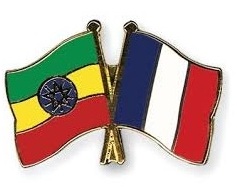
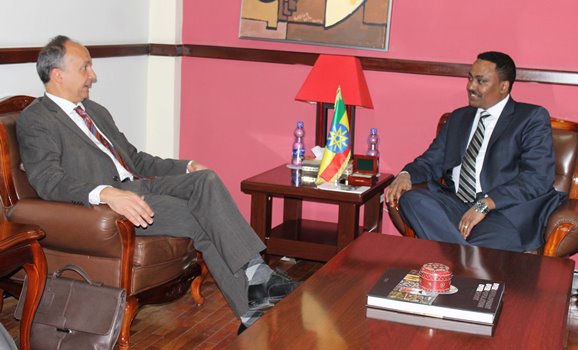 Ambassador of France to Ethiopia, Ambassador Frédéric Bontems who met with Foreign Minister Dr. Workneh Gebeyehu today (January 3, 2017) underlined that Ethiopia’s role in promoting regional peace and stability is irreplaceable, adding that it’s important to have Ethiopia on board on various international issues.
Ambassador of France to Ethiopia, Ambassador Frédéric Bontems who met with Foreign Minister Dr. Workneh Gebeyehu today (January 3, 2017) underlined that Ethiopia’s role in promoting regional peace and stability is irreplaceable, adding that it’s important to have Ethiopia on board on various international issues.
The two sides discussed at length on bilateral and regional as well as international issues of mutual interest.
Ambassador Frédéric Bontems congratulated Foreign Minister Dr. Workneh for his post as the Foreign Minister of the Federal Democratic Republic of Ethiopia.
The Ambassador also congratulated Ethiopia since it has officially begun its two year term as non-permanent member of the United Nations Security Council as of January 1st, 2017.
France, the Ambassador said would further work in concert with Ethiopia on areas of development and climate change, while also noting that the two countries will continue to work closely and enhance wider partnership through the annual bilateral consultation.
Describing France as a dependable friend of Ethiopia, Foreign Minister Dr. Workneh emphasized that Ethiopia and France will further enhance the already excellent cooperation, adding that Ethiopia is keen to work with France at the UNSC.
The Foreign Minister assured the French Ambassador that Ethiopia will further strengthen its ties with France in a range of sectors, including energy, aviation, UNSC platforms and other international forums in the years ahead.
The two sides further discussed on ways of exploring areas of cooperation in light of the ‘France-Africa Forum’ due to be held in Bamako, Mali, in May 2017.
Source: MFA Ethiopia
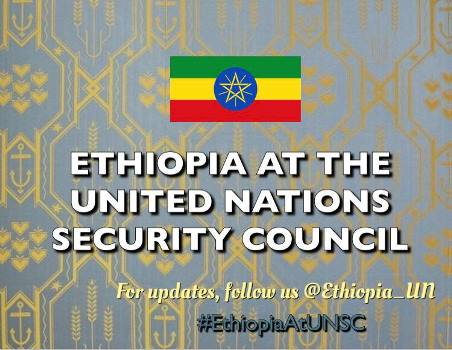
 Ethiopia has officially begun its two-year term as a non-permanent member of the United Nations Security Council (UNSC) on January 02, 2017.
Ethiopia has officially begun its two-year term as a non-permanent member of the United Nations Security Council (UNSC) on January 02, 2017.
The new UN Secretary-General, Mr. Antonio Guterres also began his duties as the 9th Secretary-General of the United Nations on the same day and he did so with a strong appeal for peace in 2017.
Ethiopia together with other members of the Council will do everything it can to respond to Mr. Guterres’ appeal for peace and meaningfully contribute to the resolution of these conflict and crisis situations.
It is to be recalled that the United Nations General Assembly elected five non-permanent members to the Security Council on June 28, 2016, at United Nations Headquarters in New York. Ethiopia was elected with 185 votes out of 190 members of the General Assembly. The election provided the successful candidates, Ethiopia, Bolivia, Sweden and Kazakhstan with Italy and the Netherlands splitting the fifth seat, with a two-year mandate for membership of the Security Council.
The election showcased a clear indication of recognition of Ethiopia’s increasing reputation for helping to maintain international peace and security. Ethiopia’s participation and experience in peacekeeping in Africa also played a significant element in its successful bid.
Ethiopia provides a contingent of 8,321 personnel, both men and women, involved in UN peacekeeping duties, one of the largest in the world. In addition, Ethiopia is a founding member and host country for the African Union.
In fact Ethiopia is a major pillar in the continent’s peace and security architecture. In the same way, Ethiopia has also played a significant contribution towards mediating conflict in the Horn of Africa including in South Sudan and in providing peacekeepers for AU missions.
Ethiopia will exert every possible effort to make meaningful and constructive contribution to the work of the Council, in close cooperation and collaboration with other members. The United Nations cannot handle today’s peace and security challenges alone and in the spirit of chapter III of the UN Charter, Ethiopia will continue to advocate for greater strategic coherence between regional mechanisms, the African Union and the United Nations in addressing the peace and security challenges on the continent.
Source: MFA Ethiopia

The House of People’s Representatives (HPR) on Tuesday (December 27) approved the second national human rights action plan. Tabled to the House by the Legal, Justice and Administrative Affairs Standing Committee, the amendment made its focus on civil, political, socio-economic, cultural, environmental and developmental rights. According to the Chairman of the Committee, Petros Woldesillasie, the newly included and amended human rights laws are believed to ensure the human and democratic rights of the people.
Source: MFA Ethiopia
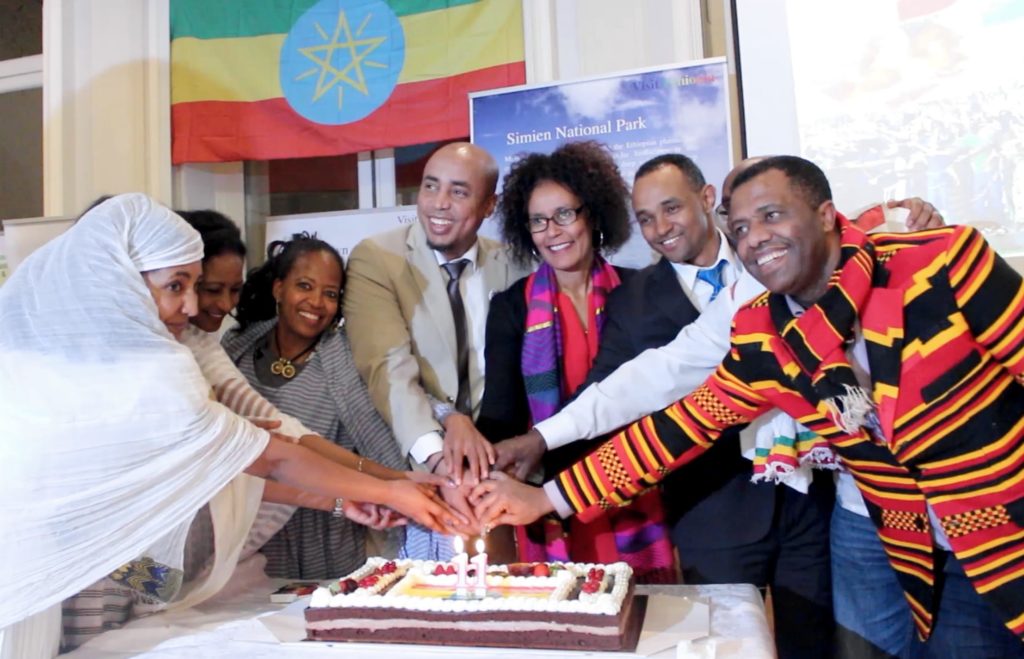
On 17 December 2016, the 11th Nations, Nationalities and Peoples Day was colorfully celebrated in Brussels. Members from the Ethiopian diaspora living in Belgium, the Netherlands and Luxembourg came to our Embassy to jointly observe this special day. After a brief presentation on the Ethiopian Federal structure, the involvement and coexistence of multiple Nations, Nationalities and People’s of Ethiopia and on the current situation and development of the country, the participants interactively discussed these issues, and concluded the celebration by enjoying together traditional food, drinks and music.